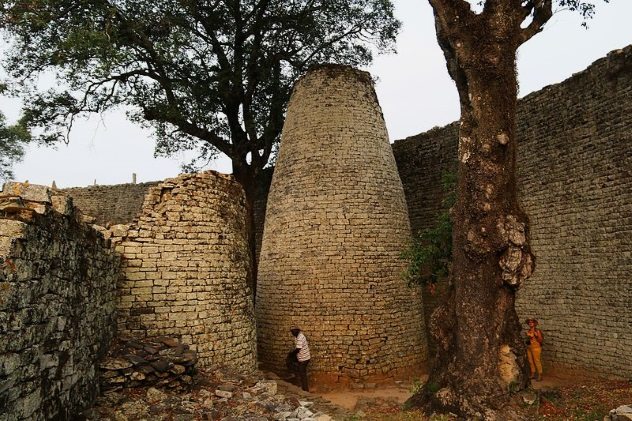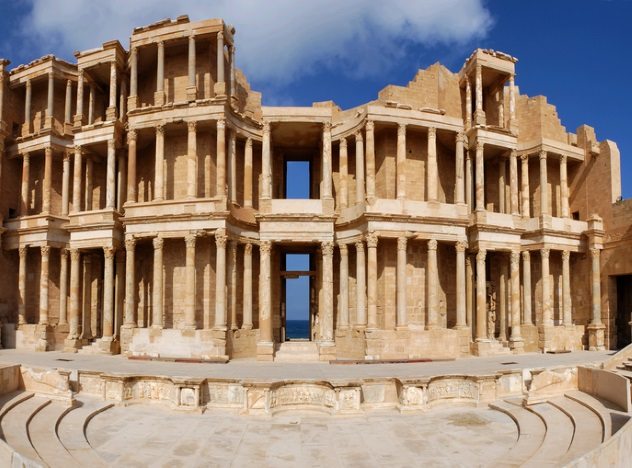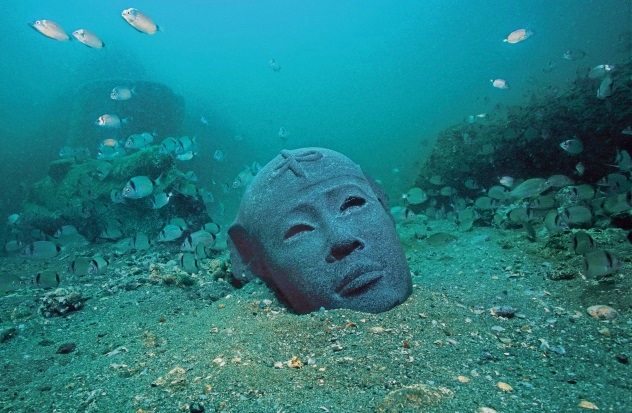7. Great Zimbabwe: The Medieval Castle Of Africa
In the early 16th century, Portuguese explorers started reporting that they’d heard legends about a castle in Africa. In the land today known as Zimbabwe, the natives told them, was a stone fortress that towered over the trees. The locals called it “Symbaoe,” and even they didn’t know who had built it.
One explorer wrote home, “When, and by whom, these edifices were raised, as the people of the land are ignorant of the art of writing, there is no record, but they say they are the work of the devil, for in comparison with their power and knowledge it does not seem possible to them that they should be the work of man.”

For centuries, Europeans thought Symbaoe was just a superstitious story. Then, in the 19th century, they actually found it. There, in Zimbabwe, was a massive castle with stone walls more than 11 meters (36 ft) tall.
The castle was made in AD 900 by an African civilization that has been lost to time—but they were incredibly connected. Inside the fortress, relics were found from all around the world, likely gathered by trading with other countries. There were Arab coins, Persian pottery, and even relics from the Chinese Ming dynasty.
Great Zimbabwe is more than just a castle. It’s proof that a lost African civilization, forgotten to history, had trade routes that connected all the way to China.
8. Leptis Magna: The Roman City Buried In Sand
A massive Roman city in Libya that was once a major trading hub for the empire was buried in a sandstorm.
The city is called Leptis Magna, and it was the place where the Roman emperor Septimus Severus was born. He turned it into a gigantic city and one of the most important parts of his empire, but when Rome started to fall, Leptis Magna fell with it. It was pillaged by raiders, destroyed by Arab invaders, left in ruins, and completely forgotten until it was buried under the drifting sands.

Leptis Magna spent about 1,200 years buried under sand dunes until 19th-century archaeologists found it. Buried under the sand, the city was almost perfectly preserved. They didn’t just find a few broken pots there; they got to unearth and walk through a whole ancient Roman city.
Leptis Magna still has an amphitheater, baths, a basilica, and a circus, all preserved so incredibly by the sand that they look almost exactly how they would have when the city was in its prime. It’s like stepping into a time machine. It’s a lost, forgotten city—and because it was forgotten, it never had to change.
9. Heracleion: The Drowned Egyptian City
Heracleion showed up in almost every Greek myth. It was the city where Heracles took his first steps into Africa. It was the place where Paris of Troy and his stolen bride Helen hid from Menelaus before the Trojan War. And we had no idea where it was.
As it turned out, there was a reason we couldn’t find one of Egypt’s most important ports: It was underwater. About 2,200 years ago, Heracleion was likely hit by an earthquake or a tsunami—and it drowned.

Divers swimming off the coast of Egypt stumbled upon it in the early 2000s. They found a strange rock under the water, and when they brought it up, they realized that it was a piece of an ancient statute. They dove back in to see what else was there. Soon, they’d found full statues, jewels, and even the drowned ruins of an ancient Egyptian temple.
A massive part of the city was still intact. Divers were able to find huge steles put up as notices to visitors, warning them, in hieroglyphics, of Egyptian tax laws. They found statues of ancient Egyptian gods, still in their original form, with fish swimming around them. It was an entire lost city, pulled from the depths of the water and brought back to life.

Really 8th wonder ?? search about Meteora in Greece and then you ll understand
With all due respects, I don’t think that is a fair comparison. Do you consider Meteora an Ancient Wonder / lost City?
Haha, the legendary lost city of vinland… Newfoundland as we call the city today.
The danes did never really sail anywhere but the ancient norwegians did because they dared to navigate out on open sea
The norwegian used sunstones to navigate. It Could tell the direction of the sun even in fog.
Use Wikipedia or the Saga. It has been proved that the Norwegians was there. Unfortunately we didn’t made the right decisions (the kings) and when the black plague came in a country with wide population the country collapsed and it took hundreds of years to recover. It is interesting to think how the world would be today if the Norwegian Wikings had succeeded. Definitely, we had no Trump 🙂
And then you hear “PERKELE”!
“Finn f(i)-nn as a boy’s name is pronounced fin. It is of Irish, Gaelic and Old German origin, and the meaning of Finn is “fair; from Finland”. Mythology: Finn MacCumhail was a legendary Irish hero (third century) somewhat like the English Robin Hood. His warrior-followers were called Finians. See also Finian.
Finn has 4 variant forms: Fin, Fionn, Fingal and Fingall.”
Sigiriya in Sri Lanka – The Palace on Top of a Rock, impossible to penetrate by the enemy. Apart from boulders positioned at strategic points, the King had massive Hornets Nests around the Rock. With one pebble the Hornets would attack. Even today the Hornets when disturbed, attack with sheer vengeance, killing humans. Another question is how water was transported to the Rock.
Sigiriya is indeed a spectacular place, however it has hardly been lost, you can’t miss the place. As for Unesco calling it the Eighth wonder of the world I can’t find any reference to this on the Unesco web site, nor would I expect to though lots of people seem to quote this without any reference.